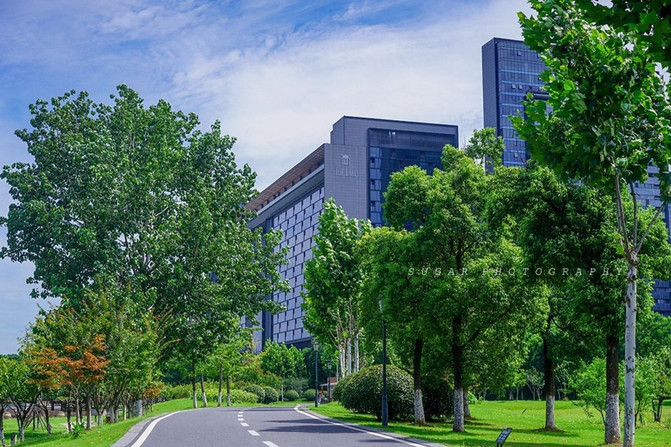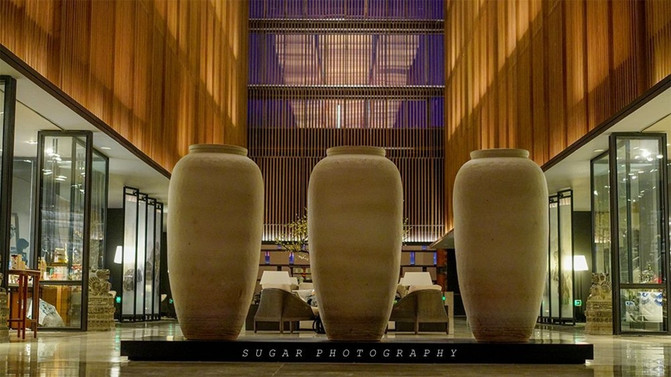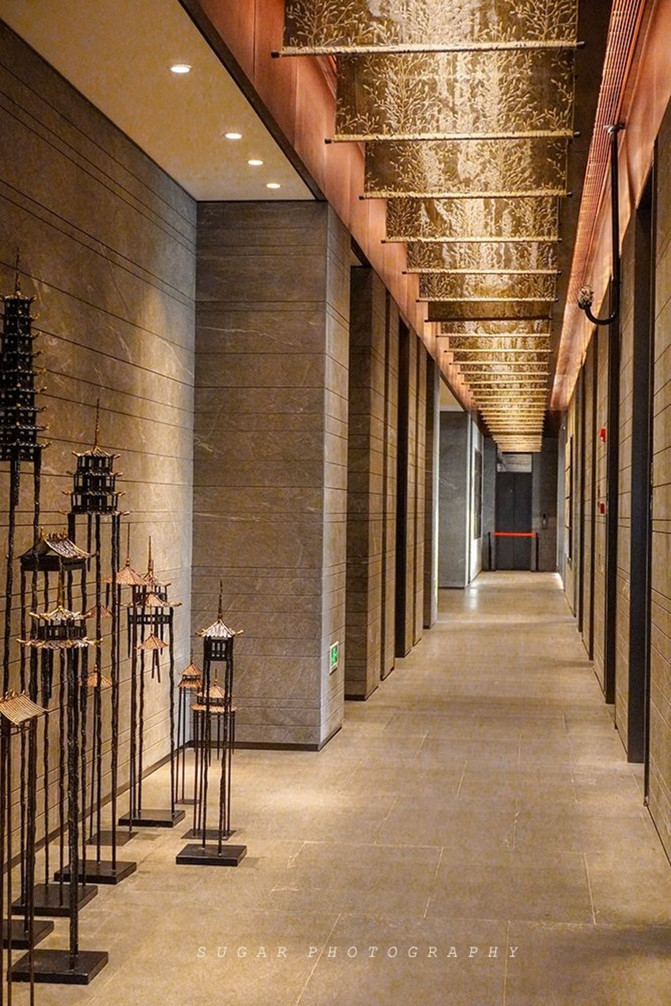Jinling has an old dream, Huaiyang seeks flavor, and opens the Hanbi Tower in Nanjing, which is like a Pandora's box
The Wanli Yangtze River is the mother river of the Chinese nation. The rolling river flows along the junction of Jiangsu and Anhui. It is blocked by the mountains in the south of the Yangtze River. It turns from southwest to northeast until it reaches the vicinity of Xiaguan in the north of Nanjing. It suddenly turns almost vertically and then flows eastward, forming a "factory" shaped big twists and turns. Therefore, the Jiangnan area is called "Jiangzuo" and "Jiangdong". Due to the unique trend of the Yangtze River in Nanjing, Nanjing has become the city closest to the Huaihe River and the Central Plains in the lower reaches of the Yangtze River. On the one hand, the regime that separated the south of the Yangtze River needed long rivers and natural grafts to defend against the northern invasion, so Nanjing naturally became one of China's four major ancient capitals in the Yangtze River Basin.
I have always longed for Nanjing. Nanjing's geographical location, the ancient capital of the Six Dynasties, and many civilized events were nurtured here. Jinling is the most elegant nickname for Nanjing. In 333 BC, King Wei of Chu Xiong Shang built Jinling City in Shitou City, from which the name Jinling originated. Jinling is an important birthplace of Chinese civilization. It has a history of more than 7000 years of civilization, nearly 2600 years of city building and nearly 500 years of capital building.
Jinling is a representative city of Chinese classical culture and elegant culture. It represents classical Chinese civilization and is known as the "World Cultural Hub". During the Six Dynasties, Jinling and Rome were both known as the "two major centers of world classical civilization." Jinling is represented by the Southern Dynasty culture. The Imperial Palace of the Six Dynasties was in Taicheng, with magnificent palaces and majestic halls. It was followed by the Northern Wei Dynasty, the capital of the Northern Wei Dynasty and other countries in East Asia, inheriting the Qin and Han Dynasties and starting the Sui and Tang Dynasties.
"Among the four capitals, Jinling is the most prosperous of literature, the handsome characters, the beautiful mountains and rivers, the magnificent atmosphere, and the close relationship between weal and woe with the nation."
I like the gentleness of Nanjing, the exquisiteness and delicacy of Huaiyang cuisine, and the polite language of Jiangnan people.
The smoke capital of Jiangzuo, the southeast is prosperous, and the dream of Jinling is only remembered by Qinhuai. The ancient capital of the Six Dynasties is the splendid Spring and Autumn Period and Wu Yue; the ancient county of the Southern Dynasties is the misty rain of Song, Qi, Liang and Chen. The tiger and the dragon plate are carved, the waves are rippling, and the purple gold is beautiful; the singing and singing songs are dancing, the water is close to the tower, and the wind and moon are ten miles away from the Qinhuai River. On the twenty-fourth bridge, Doukou resigned and painted on a book; at the entrance of Wuyi Alley, the smoke waves cross and shine in the sunset. The painted boat is swimming slowly, the night is as cool as water, the waves are cold and cold, and Gu Zhao is shining.
There are only three in the world, and each has a very unique location: Hanbi Building in Sun Moon Lake, Taiwan, Hanbi Building in Nanjing, and Hanbi Building in Qingdao. And in this best season, I walked into Nanjing Hanbi Building.
The three Hanbi Buildings each have their own characteristics. From Sun Moon Lake to the Yangtze River and then to the Golden Sand Beach. It stretches from south to north of China. Sun Moon Lake and Nanjing are 1365 kilometers away from each other.
Hanbi Building in Sun Moon Lake, Taiwan. Kerry Hill called Hanbi Building an architectural form of "Ongoing Style", which means the unique style of "progressive style". There are only two lines, water and vertical, just like Chinese splashing ink landscape paintings. If the picture is summarized to the simplest, it is the horizontal and vertical line structures. The horizontal line represents the lake image of Sun Moon Lake, and the vertical is the image of the surrounding mountains. This architectural style will make people feel even after ten years, It will not feel old even after twenty years, and it is still a valuable architectural masterpiece.
Culture is the most luxurious and charming thing. The original culture of every place often has hundreds or thousands of years of accumulation. The design of each Hanbi Building will reflect local culture as much as possible, and it is culture that makes Hanbi Building unique.
If you want a deeply relaxing trip, experience the beauty of the unity of man and man, and feel the world again, then Hanbi Tower will definitely exceed your expectations. Hanbi Tower's "Six Most Beautiful Senses" experience, that is, what you see with your eyes, what you smell with your breath, what you taste with your mouth, what you touch with your body, what you hear with your ears, and what you feel in your heart, is all the ultimate beauty.




Different from the resplendent glory of other star-rated hotels, it is a symmetrical and beautiful Chinese design with a "Chinese courtyard style" layout.
The building and interior were built entirely by Sanya Addison's design team SCDA,
Fully combine nature, architecture, gardening and other elements,
Modern minimalist Zen thinking is the ultimate expression of architectural design techniques, presenting a touching space, scene, situation and atmosphere.


River view room




The stone carvings, chimes, ancient books at the entrance of the hotel, as well as the mountains and rivers in the atrium, and the ancient charm screens, all display the oriental elements of the hotel.








In the afternoon, the clouds are light and the wind is light. When the bright moon rises, the moon is bright and the light shines, it is another romantic scene.

The sunset in Nanjing is amazing, the sky begins to change, and the Yangtze River and Hanbi Tower welcome the beauty of the sunset together. The design of the building is like a huge mirror, which is colorful and shining under the reflection of the sunset. The reflection of the sunset in the water is like a grand wonderland, and there is no smell of fireworks on earth.
The whole sky was spliced with various colors, and my friend rushed back to the hotel room to take a bath in the sunset, while I watched the sunset on the restaurant lawn.
This is the poetic scene of "Just cleared away by the sun, but asked the bright moon to send it to the future", which is both mysterious and profound. At this time, the Hanbi Tower in Nanjing was like a Pandora's box, with the key to the sunset opening the hidden mechanism.




When turning down at night, a snack is also served: a chocolate bar and a pineapple cake. At the same time, candles will be lit, which is full of ceremony.
The sound of Acacia Wood is clear and moving, and the snacks on the night bed are also satisfying. What I want most at this time is to enjoy a glass of red wine with my beloved person and talk about work and life.

Currently, the Chinese restaurant Shuisha Lian is open every day, offering Huaiyang cuisine that incorporates Taiwanese characteristics. Huaiyang cuisine is the same as Kunqu Opera, Ming and Qing furniture, and Yixing purple sand also exude a touch of literati temperament. Among the four major cuisines, Huaiyang cuisine has the most cultural heritage.



"Yangzhou Painting Boat Record" records the skills of salt merchants 'chefs: "In terms of cooking skills, the family is the best. Wu Yishan stir-fried tofu, Tian Yanmen Zuan fried chicken, Jiang Zhengtang ten kinds of pig heads, Wang Nanxi mixed with sturgeon and husky, Shi Pangzi stir-fried pork with shredded pear, Zhang Sihui whole sheep, Wang Yinshan boneless fish, Wang Wenmi chela cake, Guan Da Gu Dong soup, crab fish muddle-up, Kong Qiean 'an crab noodles, Wensi monk tofu, Xiaoshan monk saddle Qiao, all of which are superb."
The 16-word motto: "Food is in Guangzhou, taste is in Sichuan, soup is in Shandong, and knives are in Huaiyang." From "A Bite of China" to "Flavor of the World", every popular food documentary will not ignore the existence of Huaiyang cuisine. Where Huaiyang cuisine flourished, there were many literati gathered. Most of the literati were poor and happy people. They believed that "every bean and poodle are precious." Therefore, when cooking, they strive to bring ordinary raw materials to the extreme, just like painting, using slow work and meticulous work to achieve the highest level of elegance.
Nanjing has a suitable climate with four distinct seasons, crisscrossing rivers and water networks, and rich natural products. There is a saying that "there are coilia in spring, catfish in summer, crabs and ducks in autumn, and wild vegetables in winter." For a year, aquatic products, livestock, poultry, vegetables, and game have never stopped. Not only are the rivers and lakes abundant, but since they are a hub for land and water transportation, dry seafood is also common.
Even though thousands of mountains and rivers are growing, it is not as delicious as Huaiyang cuisine from Jiangnan people.




In addition to Huaiyang cuisine, the buffet is also extremely amazing




Previous Article:2017 Nanjing 1-day tour (Xinjiekou, former site of Marin Hospital, Dazhong Pavilion)
Next Article:Jiangnan daydream of Suzhou and Nanjing (along with Tai 'an)
